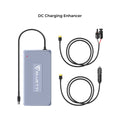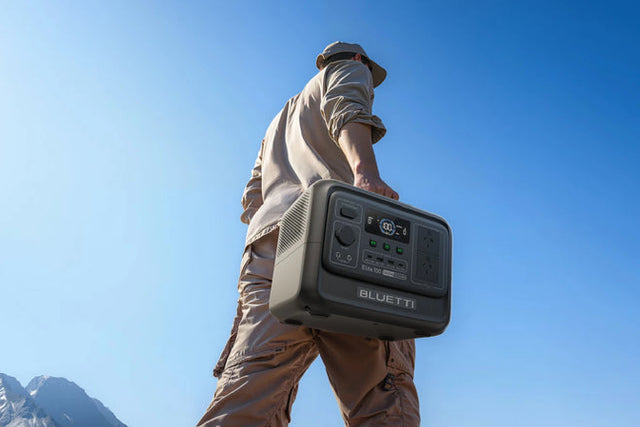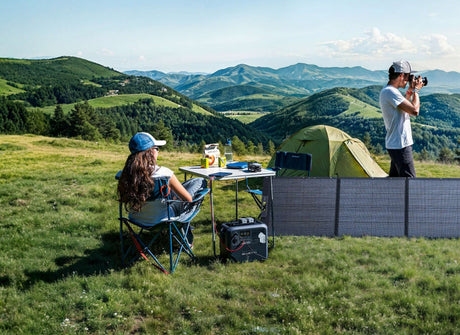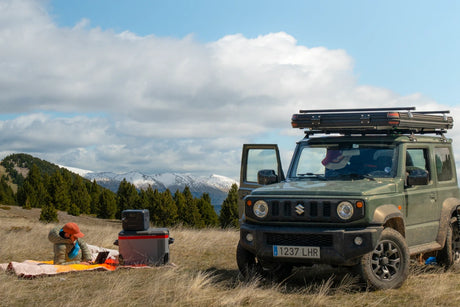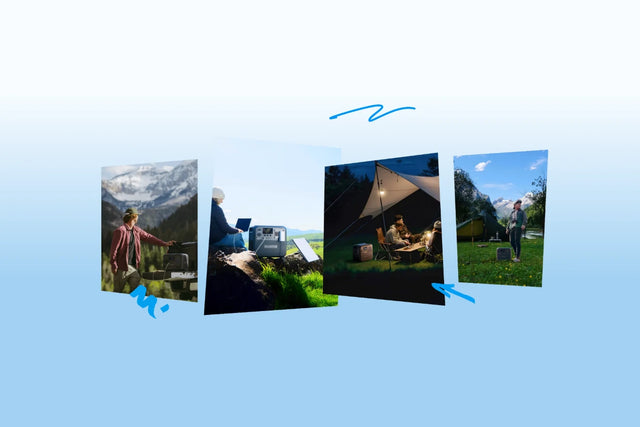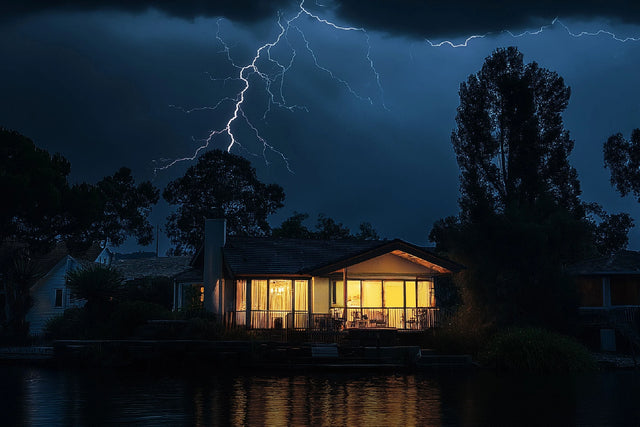In recent years, the tiny house trend has gained substantial traction, with an increasing number of people embracing minimalist living and opting for compact, efficient houses. Portable solar power is a great solution for powering these small spaces, providing a sustainable, cost-effective, and environmentally-friendly alternative to typical energy sources.
In this article, we'll look at the advantages of using portable solar panels and generators for tiny house living, as well as the various types of solar power solutions and recommendations for selecting the best arrangement for your tiny house.
Why Choose Portable Solar Power for Your Tiny House?
1) Eco-Friendliness
Adopting a minimalist lifestyle frequently entails prioritizing sustainability and minimizing one's environmental imprint.
Solar power is a sustainable and clean energy source that supports these principles by allowing you to create electricity without adding to air pollution or climate change.
2) Energy Independence
As portable solar power systems enable energy independence, they allow you to live off-grid or with less reliance on traditional power sources. This can be especially attractive to tiny house occupants who value independence and flexibility.
3) Cost Savings
While the initial cost of a portable solar power system may be higher than that of conventional energy sources, the long-term cost reductions are substantial.
Firstly, solar energy is free and once the equipment is acquired, you can get power without incurring any recurring fuel costs.
4) Scalability
Scalability is another big plus for portable solar power systems. You can easily add more solar panels or upgrade your generator as your energy needs evolve or increase.
Types of Portable Solar Power Solutions for Tiny Houses

1) Portable Solar Panels
Portable solar panels are a great option for those living in tiny houses due to their small size, low weight, and ease of installation. Depending on available space and sunlight, they can be installed on the roof, walls, or even the ground.
Portable solar panels convert sunlight into electricity pretty much instantly – electricity that can then be used to power appliances or stored for later use.
2) Portable Solar Generators
Solar generators are portable units that combine solar panels and battery storage. These devices are often larger than portable solar panels and can produce more electricity, making them appropriate for powering larger appliances or systems.
Solar generators can be charged by solar panels as well as other sources, such as alternating current or a car battery, thus providing adaptability and flexibility.
3) Complete Solar Power Kits
A complete solar power system may be the best option for individuals who want to fully commit to solar power. Typical components of a solar power kit include solar panels, a charge controller, an inverter, and battery storage.
These systems can be tailored to your specific energy requirements and offer a more robust, comprehensive power solution for your tiny house.
Choosing the Right Portable Solar Power Setup for Your Tiny House
Consider the following factors when choosing the best portable solar energy system for your tiny house:
1) Energy Consumption
Calculate the wattage of your appliances and devices to determine your daily energy use. This way, you can determine the size and capacity of the solar power system that you require.
2) Space Constraints
As tiny houses frequently have limited room, it is essential to consider the size and weight of your solar power system.
Smaller residences are better served by portable solar panels, while larger ones may benefit from solar generators.
3) Budget
As with any investment, the solar power system you select is heavily influenced by your budget. Comparatively, solar generators and comprehensive systems may have higher initial costs than portable solar panels.
It’s important to consider the long-term savings that solar energy can provide, as well as any local financial incentives or reimbursements.
4) Efficiency
Your solar power system's efficiency relates to how well it converts sunshine into useful electricity. Higher efficiency systems produce more electricity per square inch, which is particularly crucial if your tiny home has limited space for a portable solar power system, or if you want to power multiple appliances simultaneously.
5) Battery Capacity
If you go for a portable solar generator or complete solar power kit, do factor the battery capacity into your decision. The higher the battery capacity at your disposal, the more energy you will be able to store for later use.
6) Weather Resistance
If your tiny house is frequently subjected to a variety of weather conditions, it is critical to select solar panels and generators with weather-resistant characteristics, such as waterproofing and dust protection, to ensure your power source remains operational in any situation.
The Role of Energy Efficiency in Tiny House Living
Energy efficiency is critical in tiny home living because it can help you to get the most out of your portable solar power system while reducing your environmental impact. By selecting energy-efficient appliances and devices, you can reduce your overall energy consumption, making it easier for your solar power system to meet your needs and maximize your investment.
Here are some ideas for incorporating energy efficiency and conservation into your tiny house lifestyle:
1) Choose Energy-Efficient Appliances
When choosing appliances for your tiny house, you should prioritize energy-efficient models. Look for appliances with an Energy Rating label, which indicates that they fulfill the Australian Government's strict energy efficiency criteria. The Australian Department of Industry, Science, Energy, and Resources manages this rating system, which helps residents identify and choose energy-efficient appliances.
Choosing energy-efficient appliances with a high star rating is one way to live a greener, more cost-effective life.
2) LED Lighting
Energy-efficient LED lights can last up to 25 times longer and consume 75% less energy than incandescent or halogen bulbs. Since they produce less heat, LED lights are also great for keeping tiny houses cool in the summer.
3) Weatherproofing and Insulation
Proper insulation and weatherproofing can greatly reduce your heating and cooling needs, minimizing your tiny house's energy use.
Make sure your tiny house is well-insulated and cover any holes or cracks where drafts could enter.
4) Opt for Energy-Efficient Windows
High-quality, energy-efficient windows can help reduce heat loss in the winter and gain in the summer, lowering the demand for heating and cooling systems.
To minimize heat gain from the sun, look for windows with a low U-value, which indicates a low rate of heat transfer, and a low solar heat gain coefficient (SHGC).
5) Use Smart Power Strips
Even when turned off or in standby mode, your devices and appliances can drain electricity. Smart power strips, which automatically cut power to devices that are not in use, can help reduce this "phantom" energy consumption.
Adapting to Seasonal Changes with Portable Solar Power
Seasonal variations can have a big impact on how much sunlight your solar power system gets. Because daylight hours, sun angles, and weather conditions change throughout the year, you must alter your solar setup to optimum efficiency and efficacy.
Here are some pointers to help you adapt your portable solar power system to seasonal changes:
1) Adjust Solar Panel Angles
The position of the sun in the sky fluctuates throughout the year, so you must adjust the angle of your solar panels accordingly. During the spring and fall equinoxes, solar panels should be oriented at an angle roughly equivalent to your latitude.
For best sun exposure, increase the tilt angle by 15 degrees during the winter solstice and decrease it by 15 degrees during the summer solstice.
2) Monitor Sun Exposure
Keep track of the sun exposure of your solar panels throughout the year and move them as needed to ensure they receive the most sunshine.
Relocating your solar panels to a different portion of your tiny house, altering their angle, or pruning back tree branches that may be providing shade on the panels may be required.
3) Optimize Energy Consumption
You may need to adapt your energy usage habits as the amount of sunshine available changes with the seasons.
During periods of reduced sunlight, prioritize important power usage and use energy-efficient appliances and devices to ensure your solar power system can satisfy your energy needs.
4) Consider Additional Battery Storage
Having a backup battery supply can be especially useful during the winter and early spring months, when daylight hours are shorter.
This lets you save the energy surplus produced on sunny days for use during periods of sunlight unavailability.
5) Regular Maintenance and Cleaning
Maintain your solar panels' performance all year long by keeping them clean and free of debris like leaves and snow.
Inspect your solar power system on a regular basis, especially after severe weather, to catch any problems early and keep it running smoothly.
Care and Maintenance Tips for Your Portable Solar Power System
Follow these maintenance and care suggestions to keep your portable solar power system effective and reliable:
1) Regular Cleaning
Keep your solar panels free of grime, dirt, and other particles. Regularly sanitize the surface of the panels using a soft cloth and a mild cleaning solution. This serves to preserve their effectiveness and extend their lifespan.
2) Proper Installation
Ensure that your solar panels are properly and securely installed to prevent damage from high winds and other environmental factors.
You should also avoid any trees or other obstructions that cast shadows over your panels and consequently reduce their efficiency.
3) Battery Maintenance
It is crucial to keep your battery in good condition, especially for solar generators and full systems that include battery storage. Battery terminals and connectors should be inspected on a regular basis for corrosion and wear.
To extend the battery's longevity, keep it clean and dry, and follow the manufacturer's recommendations for charging and discharging cycles.
4) Inspect and Monitor
Inspect your solar power system on a regular basis for symptoms of corrosion, wear, or loose connections.
Monitoring the performance of your system will help you discover problems early on and guarantee that your solar setup continues to supply efficient, dependable power for your tiny house.
5) Protect from Extreme Temperatures
Extreme heat or cold can have an effect on the effectiveness and longevity of your solar power system. Protect your solar panels and battery storage from direct exposure to severe temperatures whenever possible by providing shade or insulation as needed.
Conclusion: Going Big on Solar for Your Tiny House

Sustainability and minimizing one's impact on the environment are at the forefront of the tiny house movement. By emphasizing energy efficiency and integrating portable solar power systems, such as compact solar panels and generators, you can create an eco-friendly, self-sufficient living space that harnesses the sun's energy.
Your solar power system can be optimized to match your specific demands with some thought given to your energy usage patterns, seasonal changes, and the efficiency of your setup. With proper care and maintenance, your solar power system will provide your tiny house with clean, dependable energy, allowing you to enjoy the benefits of sustainable living under the Australian sun.
If you are looking for a portable solar power option for your tiny house, we invite you to check out our wide range of products. We offer different kinds of portable solar panels, generators, and solar kits, and can help you choose one based on your budget, power requirements, available space, and location.












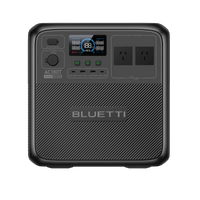












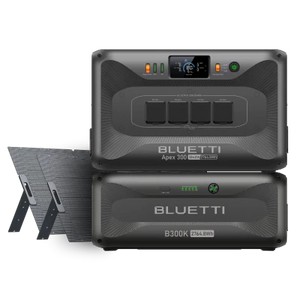





















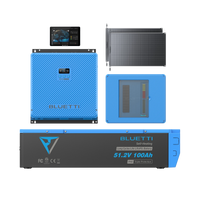


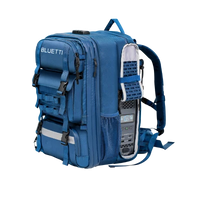


















![[Phased Out] BLUETTI B80P Expansion Battery | 806Wh](http://www.bluettipower.com.au/cdn/shop/files/202310025B80P_2000-2000px_4_4caa0c1c-4dab-4272-9e9b-2b7507e5bd81.jpg?v=1713777870&width=200)
![[Phased Out] BLUETTI B210P Expansion Battery | 2,150Wh](http://www.bluettipower.com.au/cdn/shop/files/2_08cf9ef3-03a4-4489-b641-d3edb8094896.webp?v=1716016566&width=200)
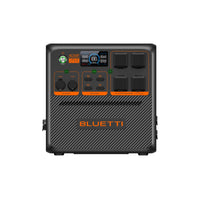


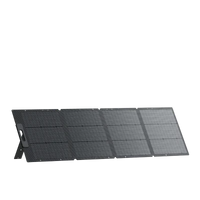


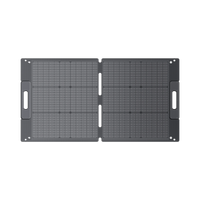





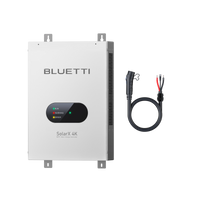






















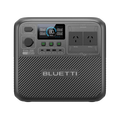

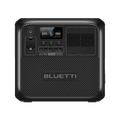






























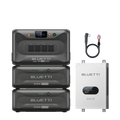



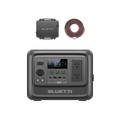





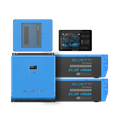














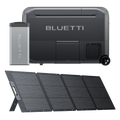




















![[Phased Out] BLUETTI B80P Expansion Battery | 806Wh](http://www.bluettipower.com.au/cdn/shop/files/202310025B80P_2000-2000px_4_4caa0c1c-4dab-4272-9e9b-2b7507e5bd81.jpg?v=1713777870&width=120)
![[Phased Out] BLUETTI B210P Expansion Battery | 2,150Wh](http://www.bluettipower.com.au/cdn/shop/files/2_08cf9ef3-03a4-4489-b641-d3edb8094896.webp?v=1716016566&width=120)


















